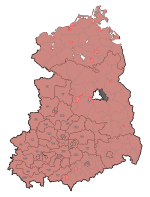So the upper house of the old German Imperial legislature had, confusingly to modern eyes, been called the Bundesrat. Like the present-day institution of the same name, it was composed of representatives sent directly by the governments of the various states - at the time, this meant they were technically personal representatives of the state's monarch, but the different states varied in how personal they were and to what extent the monarch had to follow recommendations from the state legislature. Either way, the idea of representing the states at the federal level and giving them a direct stake in legislation was still seen as useful by the founders of the Weimar Republic, and when they drew up a provisional form of government in February 1919, it included a "Committee of States " (
Staatenausschuss) intended to continue this principle. The Committee included 56 mandates, compared to 61 in the old Bundesrat, and these were mostly, sort of, assigned proportionally to the states based on population. Obviously, many of the smaller states ended up overrepresented just to get a single vote, and the changing borders of Germany at this time meant things were always going to be a bit dicey. Also because of the aforementioned border flux, the Republic of German Austria's government was given a single representative in the Committee, which was intended to be expanded if and when Austria was included in the permanent constitution. Of course, the Treaties of Versailles and Saint-Germain-en-Laye forced Germany and Austria to desist from any attempt at merging, and this ensured Austria would never again get to participate in a democratic all-German institution.
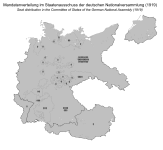
That's not to say there were no quirks in the Reichsrat (as the permanent institution ended up being named) worth mention. From 1921 onwards, the vote count was increased to 66, and Prussia decided its 26 seats would be divided into halves to more adequately represent that state's regional diversity and quasi-federal nature. Half of them would continue to represent the Prussian state government in Berlin, while the other half - conveniently, exactly one each - would be assigned to the provincial authorities, including the city of Berlin's magistrate. This basic structure continued in place, with occasional slight changes in vote weight, until the Reichsrat was dissolved in 1934 as part of the
Gleichschaltung process intended to turn Germany into a unitary state under Hitler's totalitarian leadership.
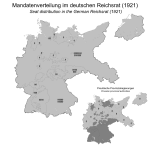
As mentioned, Prussia was itself a semi-federal state within the German federation, and it had its own upper house to represent the provincial authorities and mirror the Reichsrat on the national level. Dubbed the Staatsrat, this was a new creation of the republican government, replacing the House of Lords of the old Prussian Landtag, and it was modelled pretty closely on the Reichsrat. Its 79 votes were distributed between the provinces and Berlin according to population, with every province except Hohenzollern guaranteed at least three votes. Like the rest of the Prussian state government, the Staatsrat was dominated throughout its existence by the Weimar Coalition, and its president for most of that time was the Mayor of Cologne, one Konrad Adenauer. Because of his vehement anti-Prussian sentiment (and in spite of his generally conservative beliefs), Adenauer was a particular focus of hatred for the revolutionary right, and the Staatsrat was quickly prorogued after the
Preußenschlag in July 1932. The fact that both Adenauer and Otto Braun were dismissed without successors being named meant that the attempted dissolution of the Landtag in February 1933 could not be approved in the legal fashion, but this hardly fazed the authorities then in place, and the new elections (held under deeply suspect circumstances alongside the Reichstag elections in March 1933) returned an outright majority for the Nazis, who proceeded to abolish the Staatsrat in its current form and turn it into an advisory body consisting of appointed and ex officio members. This, in turn, technically lasted right up to 1945, but like the Prussian government as a whole it was essentially powerless, having been superceded by the
Gauleiter system on the one hand and by Hitler's absolute authority in Berlin on the other.
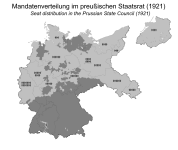

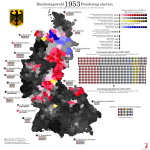
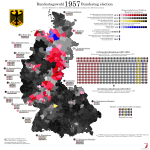
)
